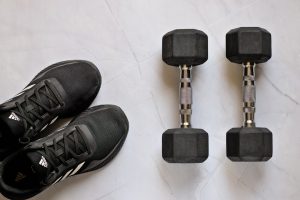Jumping and Bone Health: Expert Insights You Need
Discover expert insights on how jumping impacts bone health. Uncover the benefits and risks, and learn how to strengthen your bones today.
Benefits of Jumping for Bone Health
Increased Bone Density
Jumping exercises, such as jump rope or plyometrics, apply dynamic forces to the bones, which stimulate bone-forming cells called osteoblasts. This process helps in increasing bone density, making bones stronger and less susceptible to fractures.
Studies have shown that high-impact activities like jumping can significantly improve bone mineral density, especially in weight-bearing bones such as the hips and spine.
Enhanced Bone Strength
Regular jumping activities contribute to enhanced bone strength by promoting bone remodeling. This is a natural process where old bone tissue is replaced by new bone tissue, ensuring that bones remain resilient and robust.
The mechanical load applied during jumping encourages the bones to adapt and become tougher, thereby reducing the risk of osteoporosis and other bone-related conditions.
Improved Balance and Coordination
Jumping not only benefits bone health directly but also improves balance and coordination, which are crucial for preventing falls and related fractures. By engaging in jumping exercises, individuals can enhance their proprioception, which is the body’s ability to sense movement and position.
This can lead to better stability and reduced chances of falls, particularly in older adults who are more prone to bone injuries.
Accessible and Cost-Effective Exercise
Jumping is a highly accessible form of exercise that does not require expensive equipment or gym memberships. A simple jump rope or even jumping in place can provide significant benefits for bone health.
This makes it an ideal exercise for individuals looking to improve their bone health without incurring high costs. Additionally, jumping can be easily incorporated into a variety of fitness routines, making it a versatile option for people of all fitness levels.
Potential Risks of Jumping for Bones
Impact on Joint Health
While jumping can be beneficial for bone density, it may pose risks to joint health, particularly in individuals with pre-existing conditions such as arthritis.
The repetitive impact on joints, especially the knees and ankles, can exacerbate pain and inflammation, potentially leading to further joint damage over time.
For those with compromised joint health, low-impact exercises might be a safer alternative to maintain bone strength without putting undue stress on the joints.
Risk of Stress Fractures
Engaging in high-impact activities like jumping can increase the risk of stress fractures, particularly in individuals who suddenly increase the intensity or frequency of their workouts. Stress fractures occur when muscles become fatigued and are unable to absorb added shock, transferring the stress to the bones instead.
To mitigate this risk, it is important to gradually increase exercise intensity and ensure adequate rest and recovery between sessions.
Proper footwear that provides cushioning and support can also help reduce the risk of stress fractures.
Potential for Acute Injuries
Jumping exercises carry the potential for acute injuries, such as sprains and strains, especially if performed with improper form or on unsuitable surfaces. Landing incorrectly can lead to twisted ankles, strained ligaments, or even more severe injuries.
To prevent such injuries, it is crucial to focus on proper technique, including controlled landings and maintaining alignment throughout the movement.
Additionally, performing jumps on surfaces with some give, like grass or gym mats, can help cushion the impact.
Considerations for Older Adults
Older adults may face increased risks when engaging in jumping exercises due to age-related changes in bone density and joint flexibility. The decreased ability to absorb shock can make them more susceptible to fractures and other injuries.
For older individuals, it is advisable to consult with a healthcare provider before incorporating jumping into their exercise routine.
Alternative low-impact activities, such as swimming or cycling, might be recommended to promote bone health without the associated risks of jumping.
Expert Opinions on Jumping and Bones
The Benefits of Jumping for Bone Health
According to Dr. Emily Richards, a renowned orthopedic specialist, jumping can significantly enhance bone density.
The impact forces generated during jumping stimulate bone remodeling, which is crucial for maintaining bone strength and preventing osteoporosis. Dr.
Richards emphasizes that activities involving jumping, such as skipping rope or jumping jacks, are particularly beneficial for younger individuals whose bones are still developing.
Dr. Michael Thompson, a sports medicine expert, concurs, highlighting that the repetitive impact of jumping increases osteoblast activity.
Osteoblasts are cells responsible for bone formation, and their increased activity leads to stronger, denser bones. Dr.
Thompson suggests incorporating jumping exercises into regular fitness routines to maximize bone health benefits.
Potential Risks of Jumping on Bone Health
Despite its benefits, jumping is not without risks. Dr.
Sarah Lee, a physical therapist, warns that excessive jumping, especially on hard surfaces, can lead to stress fractures and joint issues. She advises individuals with pre-existing bone conditions or those prone to injuries to consult healthcare professionals before engaging in high-impact exercises.
Dr.
John Carter, an orthopedic surgeon, points out that improper jumping techniques can exacerbate existing bone problems. He stresses the importance of learning correct landing techniques to minimize impact on the joints and bones.
Dr. Carter recommends starting with low-impact exercises and gradually increasing intensity to avoid potential injuries.
Recommendations for Safe Jumping Practices
To safely enjoy the bone-strengthening benefits of jumping, experts recommend a few key practices.
Dr. Emily Richards suggests using cushioned surfaces, such as gym mats, to reduce impact stress on the bones and joints.
She also advises wearing appropriate footwear that provides adequate support and cushioning.
Dr. Sarah Lee emphasizes the importance of a proper warm-up routine to prepare the body for high-impact activities.
Stretching and strengthening exercises can enhance flexibility and muscle support, reducing the risk of bone injuries. Additionally, Dr.
Lee advises listening to one’s body and avoiding overexertion, as fatigue can lead to improper form and increased injury risk.
Tips for Safe Jumping to Protect Bones
Warm-Up Properly
Before engaging in any jumping activity, it’s crucial to prepare your body with a proper warm-up. This helps increase blood flow to your muscles and joints, reducing the risk of injury.
Start with light cardio exercises like jogging in place or jumping jacks for about 5-10 minutes. Follow this with dynamic stretches focusing on the legs, hips, and lower back to enhance flexibility and range of motion.
Use the Right Technique
Correct jumping technique is essential to minimize stress on your bones and joints.
When jumping, ensure that you land softly with your knees slightly bent to absorb the impact. Keep your feet shoulder-width apart and engage your core muscles for better stability.
Avoid locking your knees upon landing, as this can lead to joint strain and potential injury.
Choose Appropriate Footwear
Wearing the right footwear can significantly impact your bone health during jumping exercises. Opt for shoes that provide adequate cushioning and support to absorb shock and reduce the load on your bones.
Athletic shoes designed for high-impact activities are ideal, as they offer enhanced stability and comfort.
Progress Gradually
It’s important to increase the intensity and volume of your jumping exercises gradually. Sudden increases in activity can lead to overuse injuries and stress fractures.
Start with low-impact jumps and gradually progress to more challenging routines as your strength and endurance improve. Listen to your body and rest when needed to prevent overexertion.
Incorporate Strength Training
Strength training plays a vital role in supporting bone health and enhancing your jumping ability.
Focus on exercises that strengthen the muscles around your joints, such as squats, lunges, and calf raises. Stronger muscles provide better support and reduce the load on your bones during jumping activities.
Consult with a Professional
If you’re new to jumping exercises or have existing bone health concerns, consider consulting with a fitness professional or physical therapist.
They can provide personalized guidance and ensure that your jumping routine is safe and effective. A professional can also help you modify exercises to accommodate any limitations and prevent injury.
FAQ
Q1: Is jumping beneficial for bone health, and how often should beginners incorporate it into their fitness routine?
A1: Jumping is indeed beneficial for bone health as it is a high-impact exercise that stimulates bone density and strengthens the skeletal system. For beginners, it is important to start gradually to avoid excessive soreness and potential injury. Incorporating jumping exercises, such as jump rope or box jumps, 2-3 times a week is a good starting point. Ensure proper warm-up and cool-down routines are followed to minimize muscle soreness and enhance recovery.
Q2: How can advanced users manage recovery time after intense jumping workouts?
A2: Advanced users engaging in high-intensity jumping workouts should prioritize recovery to maximize performance and prevent injury. This can be achieved by incorporating active recovery days, such as light cardio or yoga, to promote blood flow and muscle repair. Additionally, ensuring adequate nutrition, hydration, and sleep are crucial for optimal recovery. Using techniques like foam rolling and stretching can also aid in reducing muscle tension and soreness.
Q3: What strategies can advanced users employ to overcome plateaus in their jumping fitness routine?
A3: To overcome plateaus, advanced users should consider varying their jumping routines by incorporating different types of jumps, such as depth jumps, lateral jumps, or plyometric drills, to challenge the body in new ways. Increasing the intensity or volume of workouts gradually can also help in breaking through plateaus. Additionally, cross-training with strength exercises targeting the lower body can enhance power and performance in jumping activities. Regularly reassessing and adjusting fitness goals can keep the routine engaging and effective.
Takeaway
“Ready to crush your fitness goals and transform your body? Start your new workout challenge today and unleash the best version of yourself! Download our FREE training plan now to kickstart your journey to a stronger, healthier you. Join our vibrant and supportive fitness community for daily motivation, tips, and encouragement. Don’t wait any longer – let’s sweat, smile, and succeed together! 💪🏋️♀️ #FitFam #LetsDoThis”











Comments